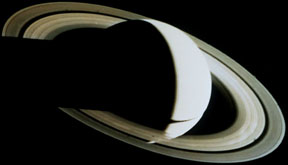This image of Saturn and its rings was taken by Voyager 1 in 1980.
Click on image for full size
Courtesy of NASA
Saturn's Rings
Many people like Saturn's rings. Although Saturn isn't the only planet with rings, it is the only planet famous for them. Almost every image or drawing of the planet has the rings included. But few people know much about them or why they are there.
Saturn's rings are made mostly of ice and rock pieces. It looks like one big band, but is actually many smaller bands combined. The particles range in size from a couple centimeters to over a kilometer in size.
The rings are very thin. Although they reach diameters in the hundred thousands kilometers, they are no more than 1.5 km thick. So how can such a thin layer of ice pieces be so beautiful? The ice creates a rainbow effect much like a sprinkler does in the sun. The Sun's rays are refracted by the frozen water, giving us a colorful display!
An gigantic new "ring" was discovered in 2009. The Phoebe Ring is about 100 times bigger than the main ring system. Scientists think the ice and dust in the ring comes from the strange moon Phoebe. Particles from this ring might cause the strange coloration of the surface of Iapetus.
You might also be interested in:
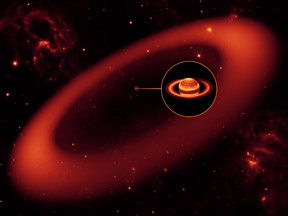
The Phoebe Ring is one of the rings around the planet Saturn. The Phoebe Ring is much bigger than Saturn's other rings. It is about 100 times larger than the main ring system. Saturn's moon Phoebe orbits
...more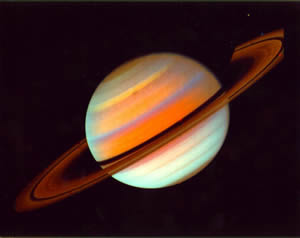
Like the inner planets and Jupiter, Saturn is clearly visible in the night sky. The ancient Greeks named the planet after the god of agriculture and time. It wasn't until 1655, however, that we knew Saturn
...more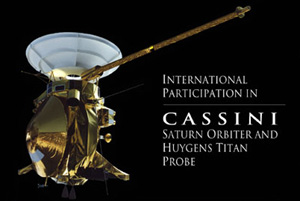
A spacecraft named Cassini will study the planet Saturn for several years. Cassini blasted off from Earth in October 1997. After flying past Venus, Earth, and Jupiter, Cassini finally arrived at Saturn
...more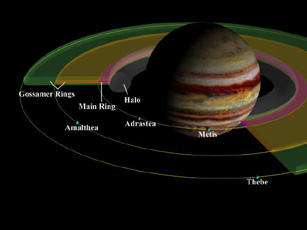
Jupiter has a series of rings circling it! Unlike Saturn's rings, which are clearly visible from Earth even through small telescopes, Jupiter's rings are very difficult to see. So difficult, in fact, that
...more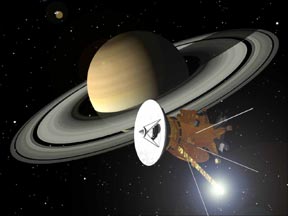
The Cassini spacecraft is on its way to Saturn. It will zoom close past a strange moon of Saturn named Phoebe. Cassini's close flyby of Phoebe will be on June 11, 2004. The best pictures we have right
...more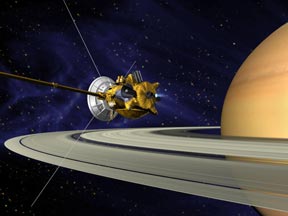
A spacecraft named Cassini will get to Saturn on June 30, 2004. Cassini's rocket engine will burn for 96 minutes to slow the robot spaceship down. If it works, Cassini will be captured into orbit around
...more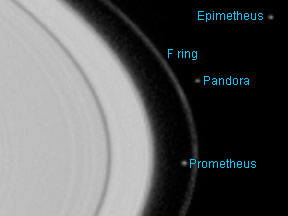
Pandora is a small moon of Saturn. It was discovered by S. Collins and others in 1980 from photos taken by the Voyager 1 spacecraft. Pandora's name comes from Greek mythology. Pandora was the first woman,
...more


